Abstract
Clostridium septicum lethal (alpha-toxin) was purified and found to be a basic protein (pI 8.4) of approximately 48 kDa that is both lethal and hemolytic. The alpha-toxin had a hemolytic activity of approximately 2 x 10(7) hemolytic units per mg and a 50% lethal dose of approximately 10 micrograms/kg of body weight for mice. The alpha-toxin formed concentration-dependent, sodium dodecyl sulfate-resistant aggregates of approximately 230 kDa. Mice immunized with alpha-toxin showed a significant increase in survival time over mock-immunized mice when challenged with C. septicum. Rabbit polyclonal antibody was generated against the purified toxin and was used to confirm that toxin with the same molecular weight was present in seven different C. septicum isolates. No proteins in the supernatants from cultures of Clostridium perfringens, Clostridium histolyticum, Clostridium chauvoei, or Clostridium difficile were found to react with the C. septicum alpha-toxin-specific antibody.
Full text
PDF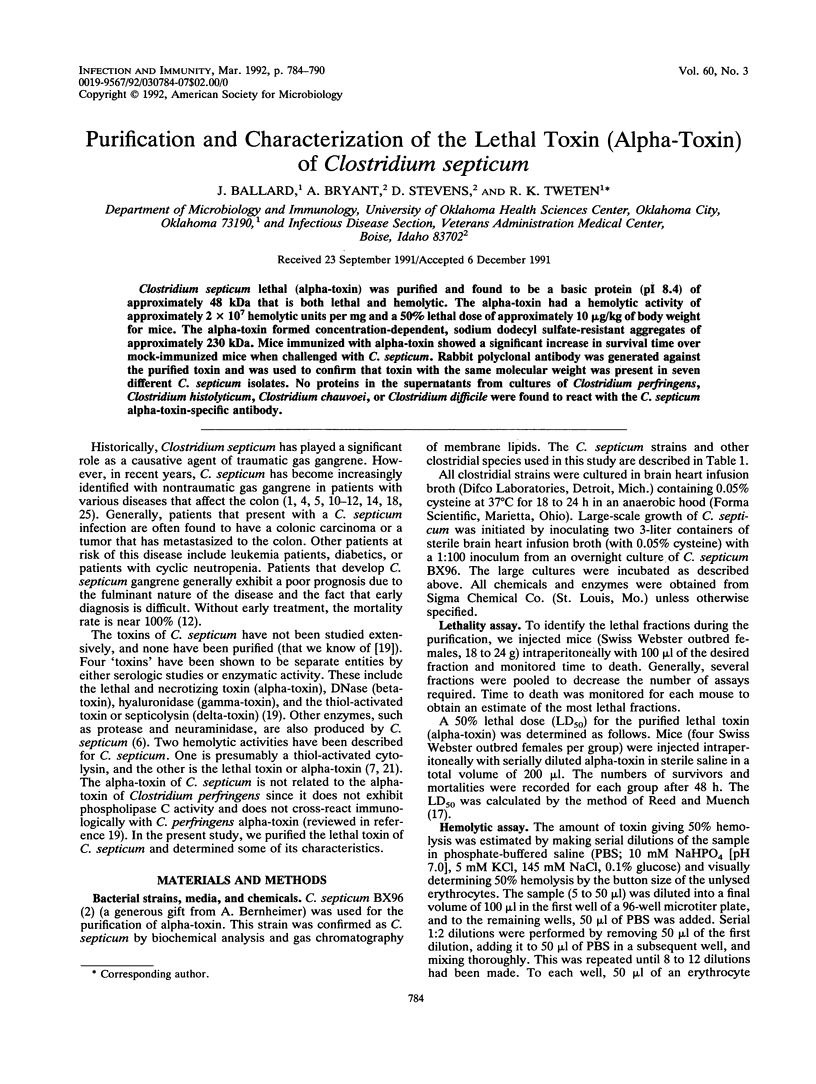
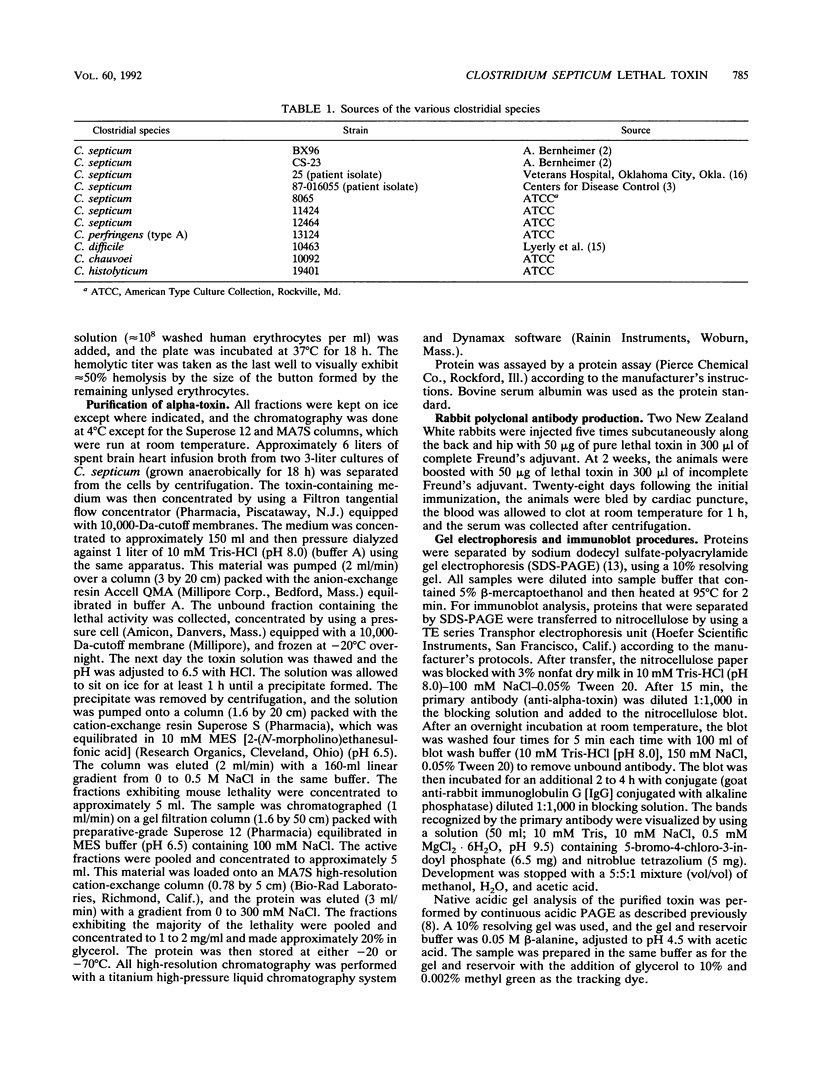
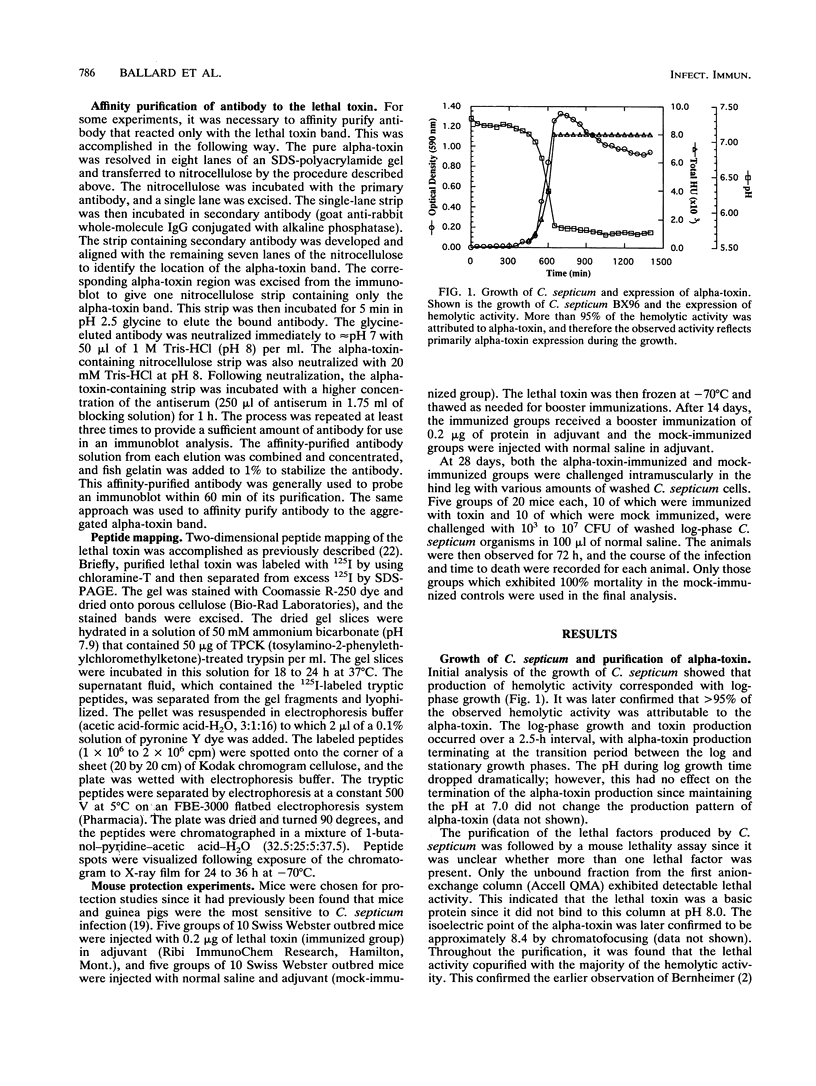
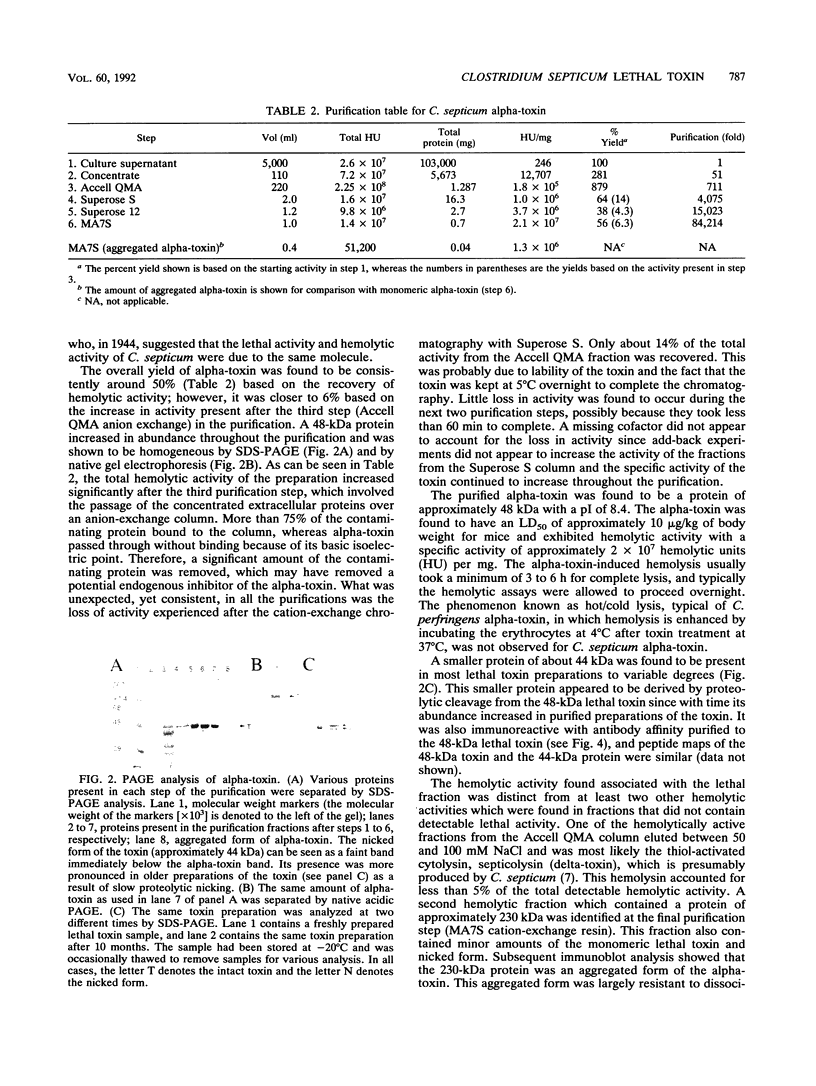
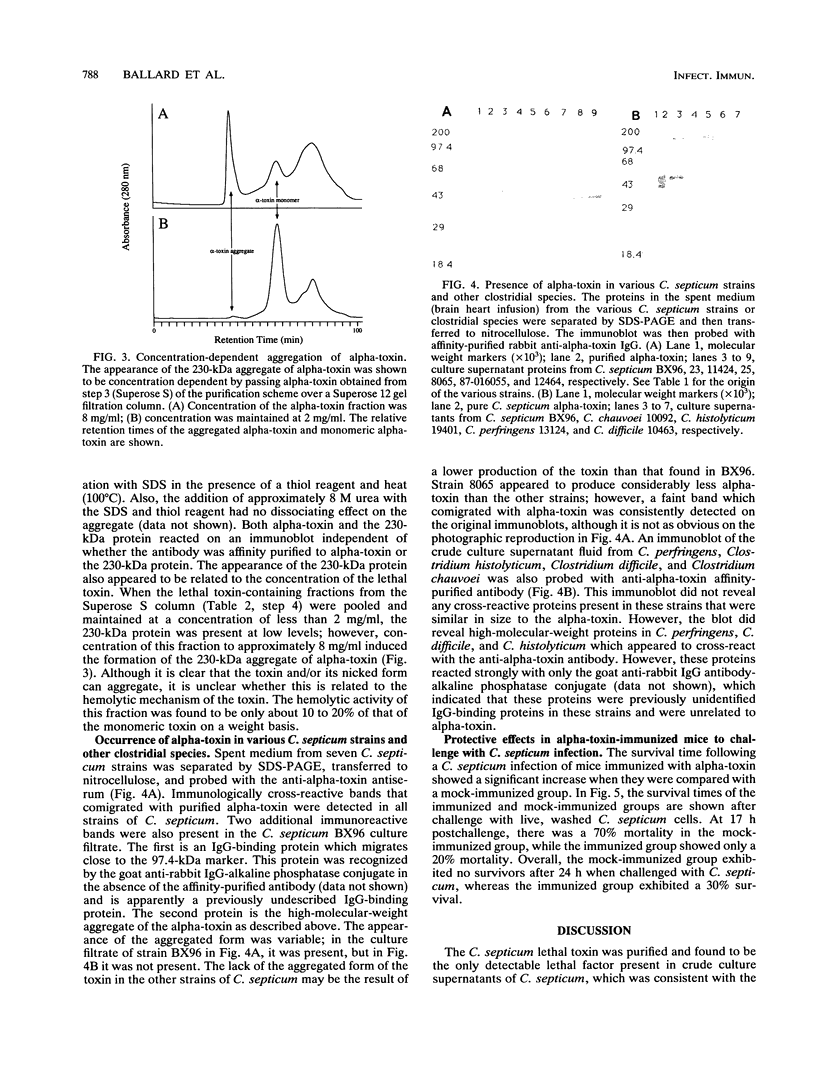
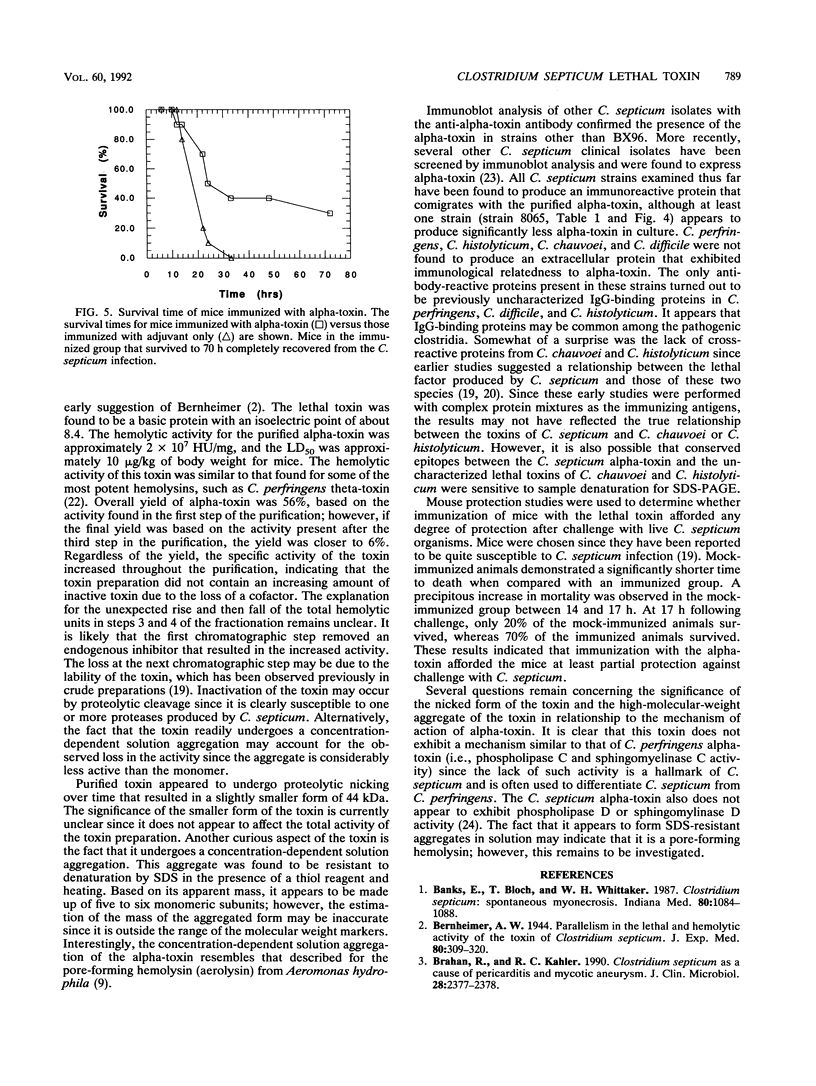
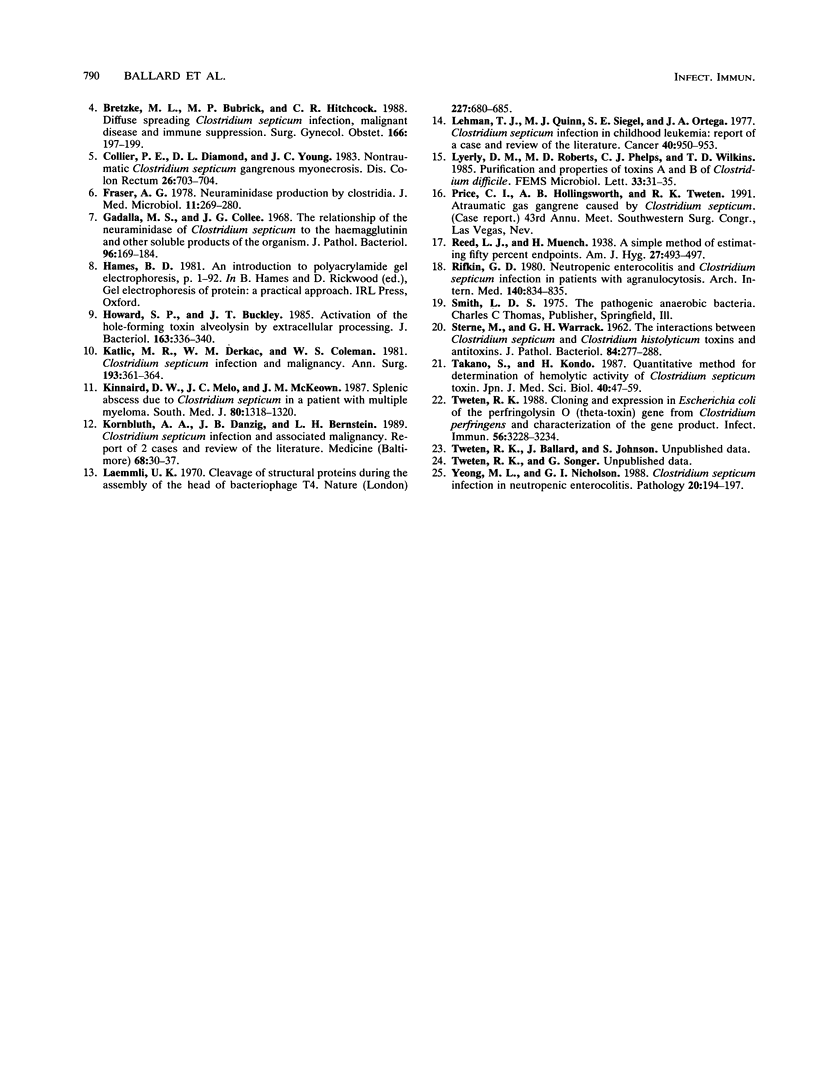
Images in this article
Selected References
These references are in PubMed. This may not be the complete list of references from this article.
- Banks E., Bloch T., Whittaker W. H. Clostridium septicum: spontaneous myonecrosis. Indiana Med. 1987 Nov;80(11):1084–1088. [PubMed] [Google Scholar]
- Brahan R. B., Kahler R. C. Clostridium septicum as a cause of pericarditis and mycotic aneurysm. J Clin Microbiol. 1990 Oct;28(10):2377–2378. doi: 10.1128/jcm.28.10.2377-2378.1990. [DOI] [PMC free article] [PubMed] [Google Scholar]
- Bretzke M. L., Bubrick M. P., Hitchcock C. R. Diffuse spreading Clostridium septicum infection, malignant disease and immune suppression. Surg Gynecol Obstet. 1988 Mar;166(3):197–199. [PubMed] [Google Scholar]
- Collier P. E., Diamond D. L., Young J. C. Nontraumatic Clostridium septicum gangrenous myonecrosis. Dis Colon Rectum. 1983 Nov;26(11):703–704. doi: 10.1007/BF02554976. [DOI] [PubMed] [Google Scholar]
- Fraser Neuraminidase production by clostridia. J Med Microbiol. 1978 Aug;11(3):269–280. doi: 10.1099/00222615-11-3-269. [DOI] [PubMed] [Google Scholar]
- Gadalla M. S., Collee J. G. The relationship of the neuraminidase of Clostridium septicum to the haemagglutinin and other soluble products of the organism. J Pathol Bacteriol. 1968 Jul;96(1):169–184. doi: 10.1002/path.1700960118. [DOI] [PubMed] [Google Scholar]
- Howard S. P., Buckley J. T. Activation of the hole-forming toxin aerolysin by extracellular processing. J Bacteriol. 1985 Jul;163(1):336–340. doi: 10.1128/jb.163.1.336-340.1985. [DOI] [PMC free article] [PubMed] [Google Scholar]
- Katlic M. R., Derkac W. M., Coleman W. S. Clostridium septicum infection and malignancy. Ann Surg. 1981 Mar;193(3):361–364. doi: 10.1097/00000658-198103000-00020. [DOI] [PMC free article] [PubMed] [Google Scholar]
- Kinnaird D. W., Melo J. C., McKeown J. M. Splenic abscess due to Clostridium septicum in a patient with multiple myeloma. South Med J. 1987 Oct;80(10):1318–1320. doi: 10.1097/00007611-198710000-00029. [DOI] [PubMed] [Google Scholar]
- Kornbluth A. A., Danzig J. B., Bernstein L. H. Clostridium septicum infection and associated malignancy. Report of 2 cases and review of the literature. Medicine (Baltimore) 1989 Jan;68(1):30–37. doi: 10.1097/00005792-198901000-00002. [DOI] [PubMed] [Google Scholar]
- Laemmli U. K. Cleavage of structural proteins during the assembly of the head of bacteriophage T4. Nature. 1970 Aug 15;227(5259):680–685. doi: 10.1038/227680a0. [DOI] [PubMed] [Google Scholar]
- Lehman T. J., Quinn M. J., Siegel S. E., Ortega J. A. Clostridium septicum infection in childhood leukemia: report of a case and review of the literature. Cancer. 1977 Aug;40(2):950–953. doi: 10.1002/1097-0142(197708)40:2<950::aid-cncr2820400254>3.0.co;2-q. [DOI] [PubMed] [Google Scholar]
- Rifkin G. D. Neutropenic enterocolitis and Clostridium septicum infection in patients with agranulocytosis. Arch Intern Med. 1980 Jun;140(6):834–835. [PubMed] [Google Scholar]
- STERNE M., WARRACK G. H. The interactions between Clostridium septicum and Clostridium histolyticum toxins and antitoxins. J Pathol Bacteriol. 1962 Oct;84:277–288. doi: 10.1002/path.1700840202. [DOI] [PubMed] [Google Scholar]
- Takano S., Kondo H. Quantitative method for determination of hemolytic activity of Clostridium septicum toxin. Jpn J Med Sci Biol. 1987 Apr;40(2):47–59. doi: 10.7883/yoken1952.40.47. [DOI] [PubMed] [Google Scholar]
- Tweten R. K. Cloning and expression in Escherichia coli of the perfringolysin O (theta-toxin) gene from Clostridium perfringens and characterization of the gene product. Infect Immun. 1988 Dec;56(12):3228–3234. doi: 10.1128/iai.56.12.3228-3234.1988. [DOI] [PMC free article] [PubMed] [Google Scholar]
- Yeong M. L., Nicholson G. I. Clostridium septicum infection in neutropenic enterocolitis. Pathology. 1988 Apr;20(2):194–197. doi: 10.3109/00313028809066634. [DOI] [PubMed] [Google Scholar]




